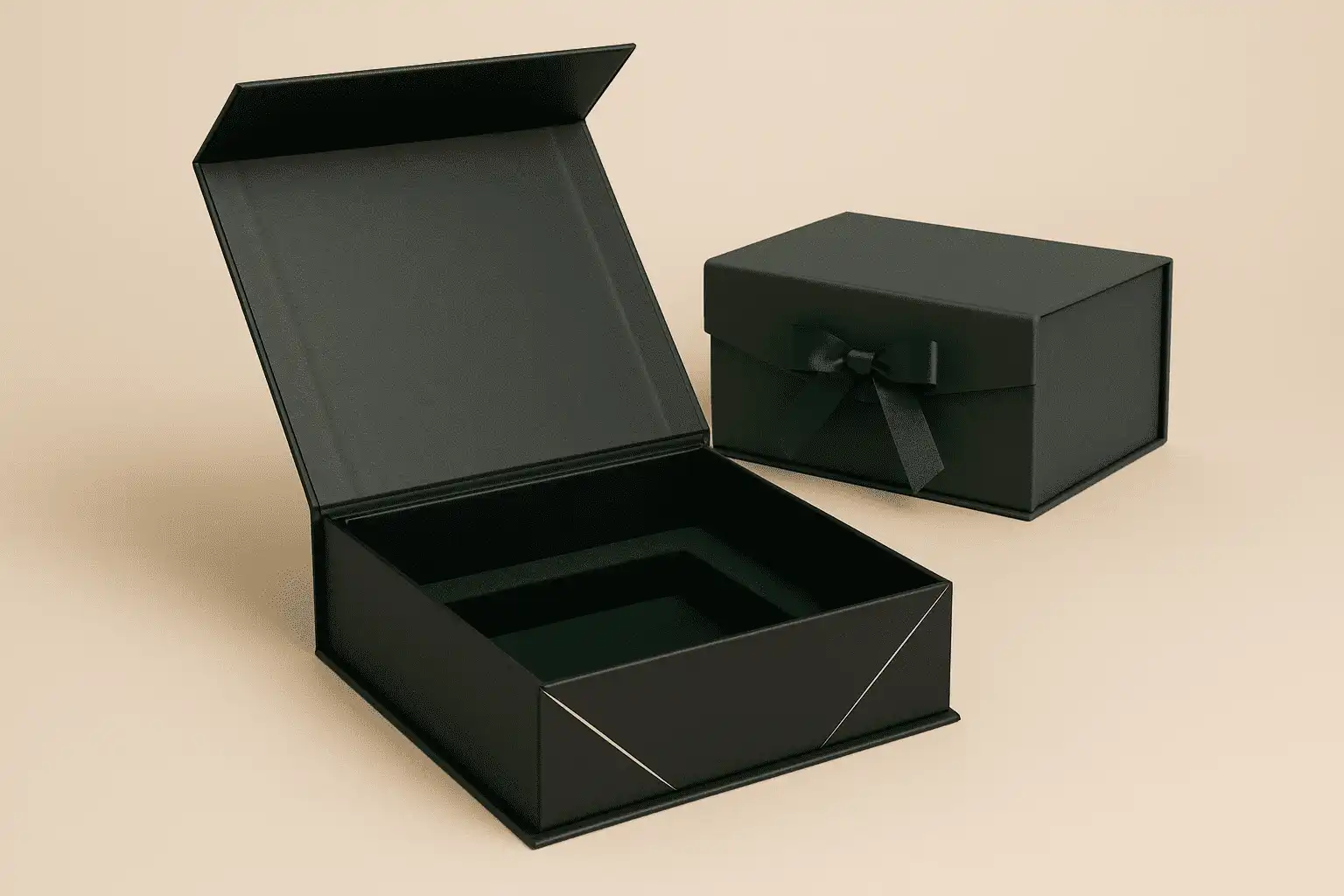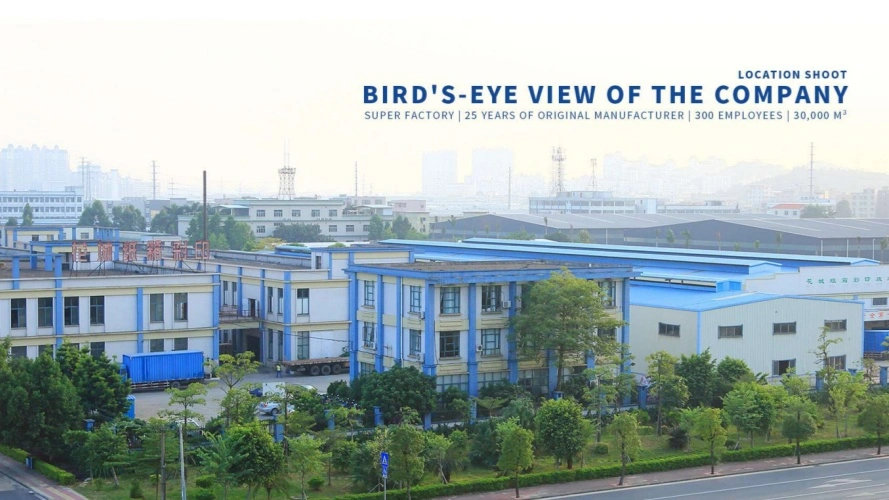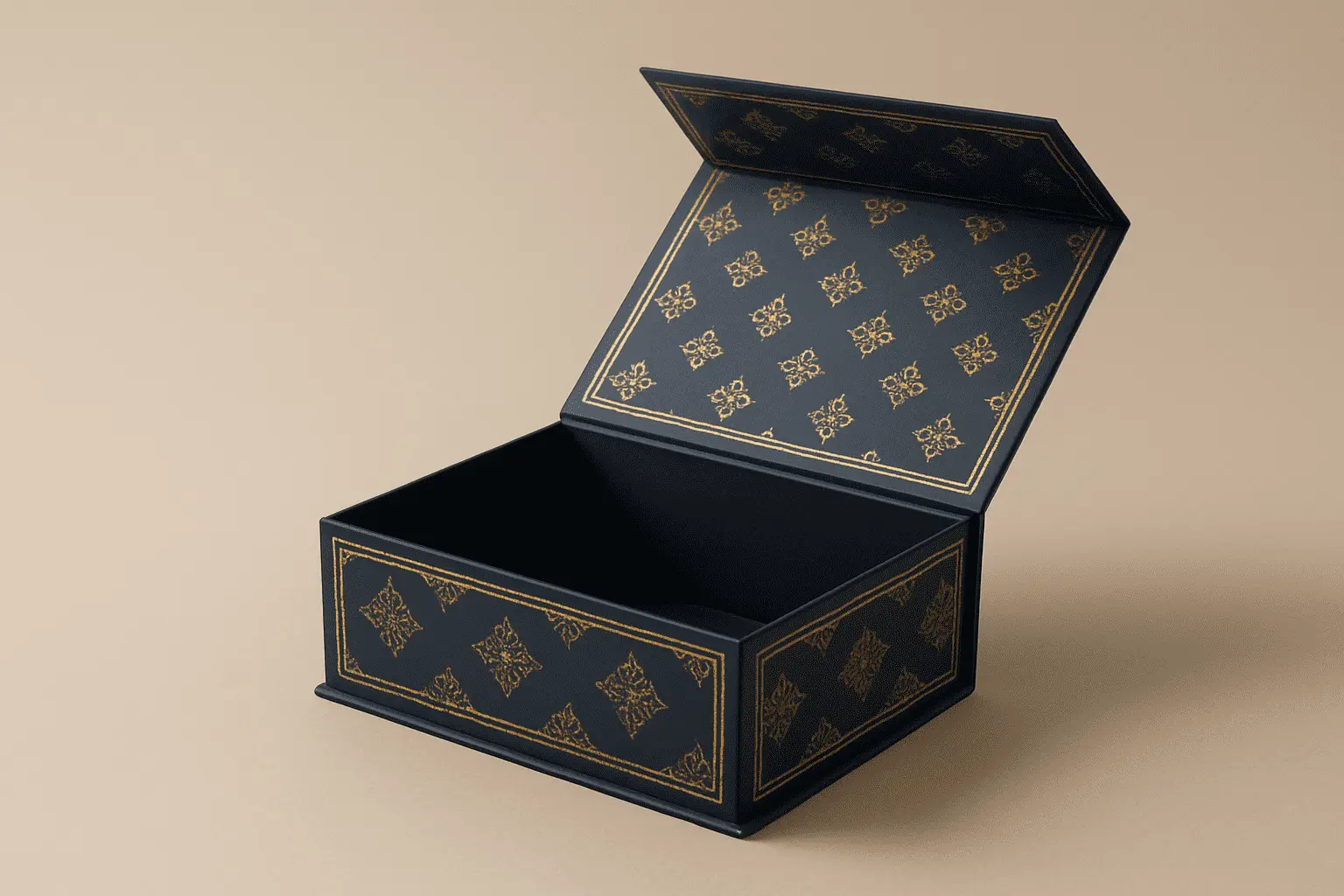Best Collapsible Rigid Boxes for Luxury Gift Presentation
Picture this: you've invested in premium products, but your warehouse is overflowing with bulky gift boxes, and shipping costs are eating into your margins. Enter the collapsible rigid box—a revolutionary packaging solution that delivers the luxurious unboxing experience your customers crave while solving your logistical nightmares. This comprehensive guide reveals why leading brands are switching to collapsible rigid boxes, how they maintain premium aesthetics while cutting costs by over 60%, and what makes them the smartest choice for luxury gift presentation in today's competitive marketplace.

Why Collapsible Rigid Boxes Are Revolutionizing Luxury Packaging?
The luxury packaging industry has witnessed a fundamental shift as brands discover that premium presentation and operational efficiency are no longer mutually exclusive. Collapsible rigid boxes represent an innovative engineering solution that addresses the most pressing challenges facing modern businesses—storage constraints, shipping expenses, and environmental responsibility—without compromising the sophisticated appearance that luxury products demand. Traditional rigid setup boxes have long been the standard for high-end gift packaging, offering unparalleled structural integrity and visual impact. However, these conventional boxes arrive pre-assembled, consuming enormous warehouse space and dramatically increasing transportation costs due to their fixed dimensions. A collapsible rigid box, by contrast, ships flat and assembles in seconds, maintaining identical premium aesthetics while revolutionizing the economics of luxury packaging. This space-saving design allows businesses to store five to ten times more units in the same warehouse footprint, fundamentally transforming inventory management strategies. The construction of premium collapsible rigid boxes involves sophisticated engineering where grey chipboard or duplex chipboard forms the structural foundation, wrapped in printed specialty papers that can showcase any brand aesthetic from minimalist elegance to bold statement designs. Advanced folding mechanisms—often incorporating magnetic closures for secure assembly—enable these boxes to collapse completely flat for storage and shipping, then spring into rigid, sturdy form when needed. This intelligent design means luxury brands no longer face the painful choice between premium presentation and practical logistics.
-
The Cost-Saving Revolution in Luxury Packaging
Financial considerations drive many purchasing decisions, and collapsible rigid boxes deliver exceptional return on investment across multiple dimensions. When comparing shipping costs, the difference is dramatic and immediate. Standard rigid boxes ship with approximately 70-80% empty air space, while a collapsible rigid box reduces this to nearly zero in its flat-packed state. For businesses ordering containers from manufacturing facilities, this translates to fitting six to eight times more units per shipment, directly cutting per-unit shipping costs by 60% or more compared to traditional rigid gift boxes. Storage cost savings compound these shipping advantages throughout the supply chain. Retailers with limited floor space no longer need to dedicate entire back rooms to bulky pre-assembled boxes. E-commerce businesses operating from compact warehouses can maintain larger inventory variety without expanding their physical footprint. The collapsible design means a single pallet of flat-packed boxes can hold what would require six to eight pallets of traditional rigid boxes, liberating valuable real estate for inventory that generates revenue rather than consuming space waiting to be filled. Beyond direct cost reductions, collapsible rigid boxes offer strategic advantages that traditional packaging cannot match. The ability to order larger quantities—because storage isn't prohibitive—unlocks better volume pricing from manufacturers. Businesses can stock multiple seasonal designs without worrying about where to put them. The reduced shipping frequency means lower carbon emissions and improved sustainability metrics, increasingly important as consumers demand environmental responsibility from luxury brands. When you calculate total cost of ownership including shipping, storage, handling, and opportunity costs, a collapsible rigid box delivers 20-30% overall savings compared even to standard collapsible designs, and dramatically more versus traditional rigid boxes.
Size Variations and Applications for Different Product Types
Successful luxury packaging requires precise dimensional matching between box and product, and professional manufacturers offer carefully engineered size ranges to accommodate diverse applications. The sizing strategy for collapsible rigid boxes typically follows product height categories, ensuring optimal fit and presentation while maintaining the structural integrity that defines premium packaging. Large collapsible rigid boxes serve products with heights ranging from 100 to 150 millimeters, making them ideal for substantial luxury items like premium electronics, deluxe beauty gift sets, high-end apparel folded with tissue, or collections of multiple products packaged together. These larger boxes often incorporate magnetic closures on multiple sides for enhanced structural stability, and the internal volume accommodates custom foam inserts or multi-compartment trays that elevate the unboxing experience. Cosmetics brands frequently use large collapsible rigid boxes for holiday gift collections featuring multiple full-size products, while electronics manufacturers rely on them for premium headphones, smartwatches with accessories, or deluxe edition gaming controllers.
Medium collapsible rigid boxes accommodate products between 50 and 100 millimeters in height, representing the most versatile size category for luxury packaging applications. This range perfectly suits individual cosmetic products like premium skincare jars or perfume bottles, jewelry pieces including watches and bracelet sets, small electronics such as wireless earbuds or portable chargers, and specialty food items like artisan chocolates or gourmet tea collections. The medium format strikes an optimal balance between presence and practicality—substantial enough to feel luxurious in the recipient's hands, yet compact enough for efficient e-commerce shipping. Many subscription box services have adopted medium collapsible rigid boxes as their standard packaging, leveraging the combination of premium presentation and shipping efficiency. Tiny collapsible rigid boxes cater to the most delicate and compact luxury items, suitable for products measuring 20 to 50 millimeters in height. This category excels for fine jewelry including rings, earrings, and pendants, luxury watch presentation when the timepiece lies flat, high-end cosmetic samples in premium gift-with-purchase programs, and technology accessories like premium charging cables or memory cards that deserve presentation beyond basic packaging. Despite their compact dimensions, tiny collapsible rigid boxes maintain the same construction quality and finishing options as larger sizes, ensuring even the smallest products receive appropriately luxurious presentation. The engineering challenge in this size range involves maintaining structural rigidity with minimal material, requiring precision die-cutting and carefully calculated fold lines to ensure consistent assembly.
-
Material Selection for Premium Aesthetic and Durability
The foundation of any collapsible rigid box lies in its rigid board substrate, and material choice profoundly impacts both aesthetics and performance. Grey chipboard represents the most economical and environmentally responsible option, manufactured by compressing multiple layers of recycled paper pulp under extreme pressure and heat. The resulting board exhibits impressive strength-to-weight ratio, provides excellent rigidity that prevents warping during assembly and use, and offers a smooth surface that accepts wrapping papers cleanly. Grey chipboard's natural sustainability story resonates with eco-conscious luxury brands, as it diverts post-consumer waste from landfills while delivering premium structural performance. Duplex chipboard elevates the aesthetic possibilities by bonding a bright white coated surface to a grey recycled core, creating the perfect substrate when the interior of your collapsible rigid box will be visible to customers. The white coated face delivers superior print quality with vibrant color reproduction, making it ideal for boxes where inside printing contributes to the overall brand experience. Many luxury brands specify duplex chipboard for book-style or clamshell designs where customers see the interior when opening the box, ensuring a consistently premium impression from every angle. The grey core maintains structural strength and cost efficiency while the white surface competes visually with fully bleached boards.
The wrapping paper applied to the rigid chipboard core transforms functional structure into luxury presentation, and material options span from sustainable to spectacular. SBS C1S (Solid Bleached Sulfate, Coated One Side) provides a premium white printing surface ideal for vibrant graphics and fine detail, with its uncoated reverse offering excellent adhesion when laminating to chipboard. SBS C2S features coating on both sides for applications requiring double-sided printing, perfect for designs where the interior paper treatment contributes to brand storytelling. CCNB (Clay Coated News Back) offers an economical alternative with white-coated printing surface over recycled newsprint backing, delivering good visual results at lower cost for brands prioritizing value. Brown Kraft paper appeals to natural, organic, and artisanal brands seeking earthy authenticity, while metallic papers deliver instant luxury impact with mirror-like or pearlescent finishes in gold, silver, copper, or specialty colors.
Premium Finishing Techniques That Elevate Brand Perception
Surface finishing transforms printed collapsible rigid boxes from attractive to extraordinary, and luxury brands leverage these techniques to create memorable tactile and visual experiences. The strategic application of premium finishes differentiates products on crowded retail shelves and elevates perceived value, often justifying premium pricing that exceeds the modest cost of the finishing itself. Hot foil stamping remains one of the most effective methods for adding immediate luxury appeal to any collapsible rigid box. This process transfers metallic or pigmented foil onto specific design areas using precisely controlled heat and pressure, creating elements that catch light and draw attention. Gold foil delivers timeless luxury particularly effective for jewelry, cosmetics, and premium spirits packaging. Silver foil offers modern sophistication ideal for technology products and contemporary beauty brands. Colored foils including rose gold, copper, and specialty colors enable perfect brand matching while maintaining metallic impact. The raised texture of foil stamping adds a subtle but noticeable tactile dimension that communicates quality through touch as well as sight, making it particularly effective for brand names, logos, and key messaging that deserves emphasis.
Embossing and debossing create three-dimensional relief effects that engage customers through touch, adding depth and sophistication that flat printing cannot achieve. Embossing raises the design elements above the surrounding surface, creating a dimensional effect that casts subtle shadows and catches light. This technique works beautifully for logos, monograms, and decorative patterns, particularly effective when combined with foil stamping for maximum impact. Debossing creates the inverse effect, pressing designs into the surface to create recessed areas with refined elegance. Many luxury brands favor debossing for its understated sophistication—the effect is subtle from a distance but rewards closer inspection with tactile interest. Blind embossing or debossing, executed without ink or foil, delivers minimalist elegance particularly appropriate for high-end fashion and lifestyle brands pursuing refined aesthetic restraint. UV coating technology offers dramatic visual effects through spot application or overall coverage. Spot UV involves applying high-gloss UV-cured varnish to specific design elements while leaving surrounding areas matte, creating striking contrast that emphasizes key visual components. This technique excels for highlighting product photography, emphasizing brand names, or creating pattern effects that shift depending on viewing angle. The raised texture of spot UV adds subtle dimensionality beyond its visual impact. Overall UV coating provides protective gloss or matte finish across the entire surface, enhancing color vibrancy while protecting printed graphics from scratching and moisture. Many premium collapsible rigid boxes combine matte lamination with spot UV for maximum impact—the matte background creates sophisticated foundation while UV-coated elements pop with brilliant shine.
-
Advanced Combination Techniques for Signature Luxury
The most distinctive collapsible rigid boxes often combine multiple finishing techniques in carefully orchestrated layers that create signature effects impossible to replicate with single processes. Spot UV combined with embossing represents a particularly effective combination where the same design element receives both treatments—first embossed to create dimensional relief, then topped with spot UV for brilliant shine. This layered approach creates focal points that dominate visual attention and communicate premium quality instantly. Luxury cosmetics brands frequently employ this combination for product names and key brand elements, ensuring immediate shelf impact. Holographic foil stamping pushes luxury packaging into cutting-edge territory with microscopic laser-etched patterns that create shifting rainbow effects and subtle texture. Unlike standard foil stamping that delivers solid metallic color, holographic foils incorporate prismatic patterns that change appearance with viewing angle, creating mesmerizing visual effects that feel futuristic and premium. This technique has gained popularity among beauty brands targeting younger demographics who appreciate bold, Instagram-worthy packaging. The anti-counterfeiting benefits of holographic foils provide additional value for products vulnerable to imitation. Soft-touch coating or lamination delivers velvety surface texture that elevates perceived quality through tactile experience. This finish creates a luxurious hand-feel similar to peach skin or suede, making customers want to hold and stroke the packaging. Soft-touch finishes resist fingerprints and scratches while adding warmth to the overall presentation. When combined with foil stamping or spot UV, soft-touch backgrounds create dramatic contrast—the smooth, raised metallic or glossy elements feel distinctly different from the velvety surrounding surface, engaging multiple senses simultaneously. Premium electronics brands and high-end cosmetics frequently specify soft-touch finishes for the sophisticated, tactile luxury they deliver.
Production Process Excellence and Quality Assurance
Manufacturing premium collapsible rigid boxes requires sophisticated production capabilities and rigorous quality control at every stage. Understanding the production process helps businesses appreciate the technical complexity involved and set realistic expectations for lead times and minimum order quantities. The production journey begins with printing, where offset, digital, or flexographic presses transfer designs onto paper or board substrates. Offset printing remains the gold standard for large production runs, delivering exceptional color accuracy, fine detail reproduction, and consistency across thousands of impressions. Modern offset presses can achieve resolution and color matching that brings packaging designs to life with photographic clarity. Digital printing offers advantages for shorter runs or projects requiring variable data printing, with improving quality now approaching offset standards for many applications. Flexographic printing serves specialized needs particularly in corrugated applications, though less common for premium rigid box wrapping papers.
Surface finishing follows printing, where coatings and varnishes enhance and protect the printed graphics. This stage applies UV coatings, aqueous coatings, or lamination films depending on desired aesthetic and functional properties. Precision registration ensures spot UV and other selective coatings align perfectly with underlying printed designs. Foil stamping occurs at this stage using heated dies that transfer metallic or pigmented foils to specific design areas. Embossing and debossing employ precisely machined male and female dies that press three-dimensional relief into the material. The technical challenge involves coordinating all finishing techniques so they complement rather than interfere with each other, requiring experienced operators and calibrated equipment. Lamination or mounting bonds the printed and finished paper to the rigid chipboard substrate that provides structural foundation. This critical step employs specialized adhesives and pressing equipment to create permanent bonds without wrinkles, bubbles, or delamination. Temperature, pressure, and dwell time must be precisely controlled to achieve consistent results. For collapsible rigid boxes, this stage also involves laminating the board to exact thickness specifications that enable proper folding without cracking or separation along crease lines. Quality control during lamination prevents defects that would only become apparent during assembly, potentially ruining entire production batches.
-
Die-Cutting, Assembly, and Final Quality Inspection
Die-cutting transforms flat laminated sheets into precisely dimensioned box components using custom metal dies that cut, crease, and perforate in single operations. For collapsible rigid boxes, die-cutting accuracy proves absolutely critical—tolerances measured in fractions of millimeters determine whether boxes will assemble smoothly and collapse properly. The dies incorporate not just cutting edges but also creasing rules that pre-score fold lines, ensuring boxes collapse and re-assemble consistently without material fatigue or failure. Stripping removes waste material from around die-cut shapes, leaving clean box blanks ready for assembly. Modern die-cutting equipment incorporates automated feeding and quality monitoring that maintains consistency across production runs. Gluing and assembly joins die-cut components into finished collapsible rigid boxes through carefully orchestrated sequences of folding and adhesive application. Automated gluing equipment applies precise amounts of adhesive to designated areas—too much creates messy squeeze-out and prevents proper collapsing, too little results in weak bonds that fail during assembly or use. For boxes incorporating magnetic closures, this stage involves positioning magnets with extreme precision so opposing magnets align perfectly when boxes close. Premium collapsible rigid boxes often incorporate corner reinforcements and strategic adhesive placement that maintains structural integrity through repeated collapsing and assembly cycles. Quality inspection during assembly identifies any boxes with misaligned components, weak glue joints, or other defects before they enter final packing.
Packing and shipping represents the final production stage where finished collapsible rigid boxes undergo final inspection before carefully packing into shipping cartons. Because these boxes ship flat, proper packing technique prevents shifting during transportation that could cause edge damage or corner crushing. Most manufacturers wrap stacks in protective paper or film, then pack multiple stacks into sturdy corrugated shipping cartons with corner protection and fill material. Packing documentation includes quantity verification, lot numbers for traceability, and often photographic evidence of proper packing technique. Final shipment occurs via sea freight for most international orders, with air freight available for rush projects despite significantly higher cost. The flat-packed nature of collapsible rigid boxes delivers its greatest advantage here—more units fit in containers, reducing per-unit shipping cost dramatically while still protecting product integrity during transoceanic transportation.
Ordering Process and Partnership Expectations
Successful packaging projects require effective collaboration between brand and manufacturer, and understanding the ordering process helps establish realistic expectations and prevents common miscommunications that delay production or result in unsatisfactory results. The journey begins with demand consultation where customers share their vision, requirements, and constraints. This initial discussion should cover product dimensions and weight, desired box style and size category, quantity requirements and budget parameters, timeline expectations and launch deadlines, and any special requirements for custom structures or finishing techniques. Experienced packaging manufacturers ask probing questions that uncover unstated assumptions and identify potential technical challenges early. This consultation phase establishes whether a collapsible rigid box represents the optimal solution or whether alternative packaging formats might better serve the project goals. Transparent discussion about minimum order quantities, pricing tiers, and lead times prevents surprises later in the process.
Solution design translates conceptual requirements into concrete specifications through iterative collaboration between business managers and technical teams. This phase produces detailed box specifications including exact dimensions, material selections, and structural features. Design teams create visual mockups showing how graphics will appear on the finished box, often developing multiple options for comparison. For projects requiring custom structures beyond standard sizes, engineering teams develop prototype designs with folding mechanisms engineered for the specific product. This collaborative design phase typically involves several rounds of revision as details are refined and optimized. Successful manufacturers maintain clear communication during this phase, explaining technical limitations honestly and proposing creative solutions when initial concepts prove impractical or cost-prohibitive. Professional implementation creates physical samples that transform digital designs into tangible reality. Sample production allows evaluation of materials, colors, finishing techniques, and structural functionality before committing to full production. This critical step often reveals adjustments needed for optimal results—colors may require calibration, structural reinforcements may be necessary, or assembly sequences may need refinement. Experienced brands insist on physical samples and often order multiple rounds with progressive refinements until every detail meets expectations. The incremental cost of additional sampling pales compared to the expense and disruption of discovering problems after manufacturing thousands of boxes. Sample approval should involve all stakeholders including marketing, operations, and product teams to ensure the packaging will satisfy requirements from every perspective.
-
Order Placement and Production Partnership
Successfully placing orders requires clear documentation and realistic expectations about timelines and collaboration requirements. Once samples receive approval, formal orders require deposit payment typically ranging from 30% to 50% of total order value, with balance due upon completion or before shipping depending on negotiated terms. Purchase orders should specify exact quantities, confirmed materials and finishes, delivery location and desired timeline, and packaging requirements for the boxes themselves. Clear purchase documentation prevents misunderstandings that create friction during production. Production timelines vary based on order complexity and quantity, with typical lead times ranging from 15 to 25 business days for standard runs without exotic finishing requirements. Rush production may be available at premium cost, while complex custom structures or unusual finishing combinations may require extended timeframes. Shorter production times become possible when using automatic visual positioning box production lines that modern manufacturers employ for efficiency and quality consistency. These advanced systems use computer vision to position and align components with precision impossible through manual processes, reducing production time while improving consistency. Transparent communication during production keeps customers informed of progress and alerts them immediately to any challenges requiring attention or decision.
Quality assurance continues throughout production with monitoring at every critical stage. Premium manufacturers maintain documented quality control procedures with specified tolerances and inspection frequencies. Final inspection before shipping verifies that finished boxes meet approved samples in all respects, checking dimensions, color accuracy, finishing quality, structural integrity, and packaging adequacy. Defect rates for established manufacturers typically remain below 1%, with any defective units replaced without charge. Building ongoing partnerships with reliable collapsible rigid box manufacturers delivers benefits beyond individual orders—established relationships enable smoother reorders, accommodation during emergencies, and collaborative innovation as packaging needs evolve. The best manufacturer relationships feel like partnerships where both parties invest in mutual success.
Conclusion
Collapsible rigid boxes represent the optimal convergence of luxury aesthetics and operational intelligence, delivering premium unboxing experiences that elevate brand perception while solving the cost and logistics challenges that constrain traditional rigid packaging. These innovative structures prove that businesses no longer face forced choices between sophisticated presentation and practical efficiency—modern engineering enables both simultaneously, creating competitive advantages across shipping, storage, and sustainability dimensions. For brands committed to exceptional customer experiences without accepting prohibitive packaging costs, collapsible rigid boxes deliver the strategic solution the market demands.
Cooperate with GUANGZHOU FETCHING COLOR PRINTING & PACKAGING LTD.
Since 1999, Guangzhou Fetching Color Printing & Packaging Ltd. has specialized in manufacturing premium collapsible rigid boxes and comprehensive packaging solutions from our 50,000㎡ facility. Our 300+ employees operate industry-leading equipment including KBA106-(9+1) UV printing machines and Heidelberg XL162-6L presses, supported by over ten experienced packaging engineers providing innovative structure development, material applications, and process technology. We proudly serve 1,000+ loyal customers across food, cosmetics, personal care, and electronics industries with ISO14001-2015, ISO9001-2015, Smeta, G7, FSC, and Disney certifications demonstrating our commitment to quality and environmental responsibility.
As a leading China collapsible rigid box manufacturer, China collapsible rigid box supplier, and China collapsible rigid box factory, we offer competitive collapsible rigid box prices and high quality collapsible rigid box wholesale solutions with collapsible rigid boxes for sale in three patented proprietary sizes. Contact public@fetchingprinting.com today to discuss your packaging requirements and discover how our expertise delivers the perfect solution for your brand. Bookmark this page for quick reference whenever packaging questions arise—your success is our success.
References
1. Smith, Jennifer and Roberts, Michael. "Sustainable Packaging Solutions in Luxury Markets." Journal of Packaging Technology and Research, Vol. 15, No. 3, 2024.
2. Chen, Wei. "Cost-Benefit Analysis of Collapsible Versus Traditional Rigid Box Packaging." International Journal of Supply Chain Management, 2023.
3. Anderson, Sarah. "Consumer Perception of Premium Packaging in E-Commerce." Marketing Science Quarterly, Vol. 28, No. 2, 2024.
4. Thompson, David and Williams, Emily. "Engineering Innovations in Foldable Rigid Packaging Structures." Packaging Engineering Review, Vol. 42, 2024.

Based on your location and order quantity, you will have the opportunity to receive a limited time free shipping promotion!

Corporate Purpose
